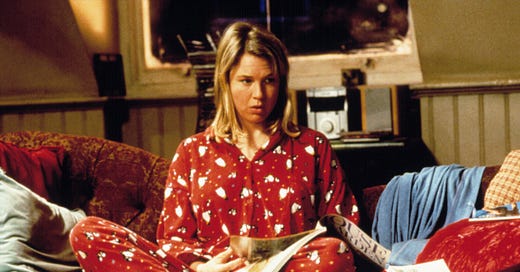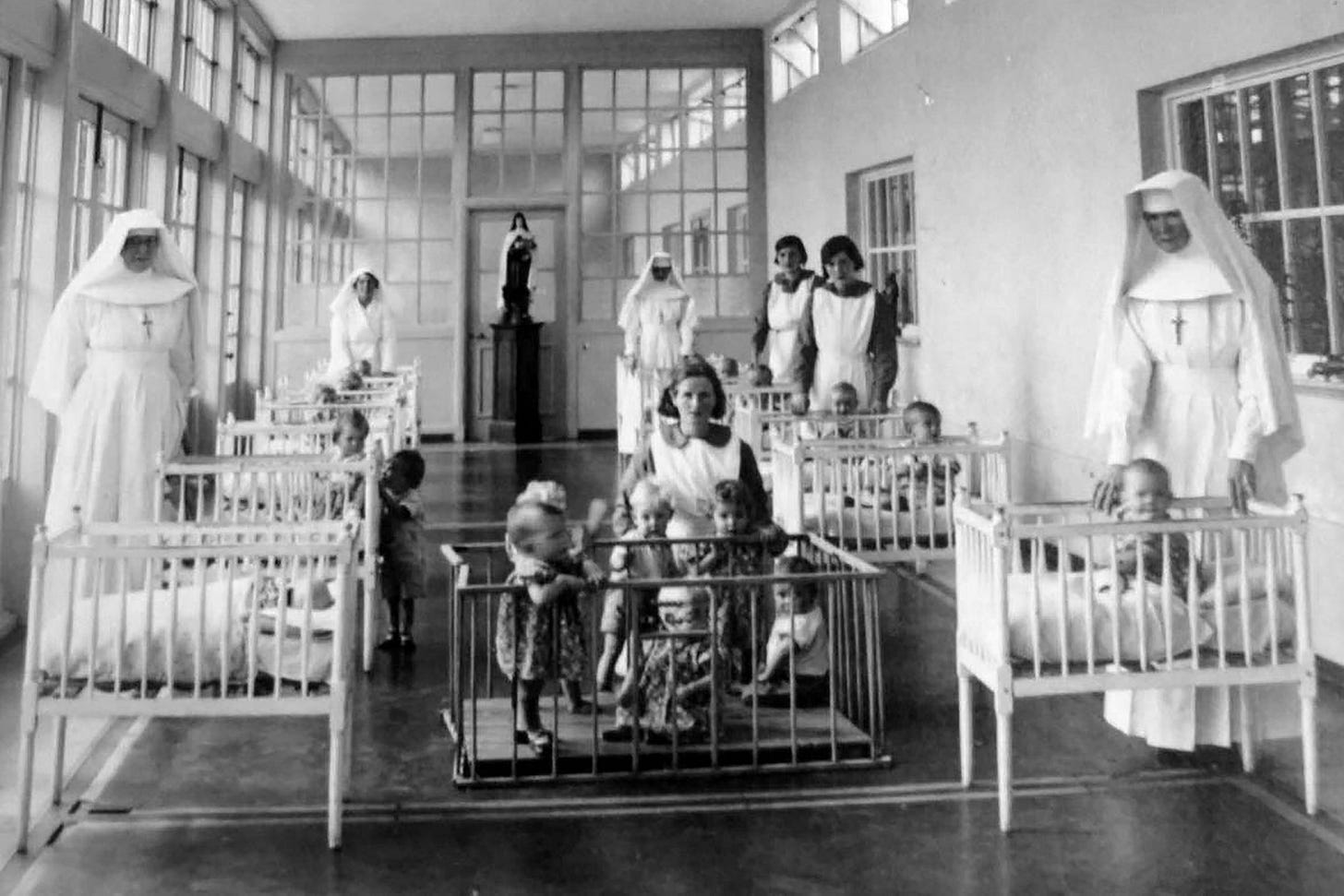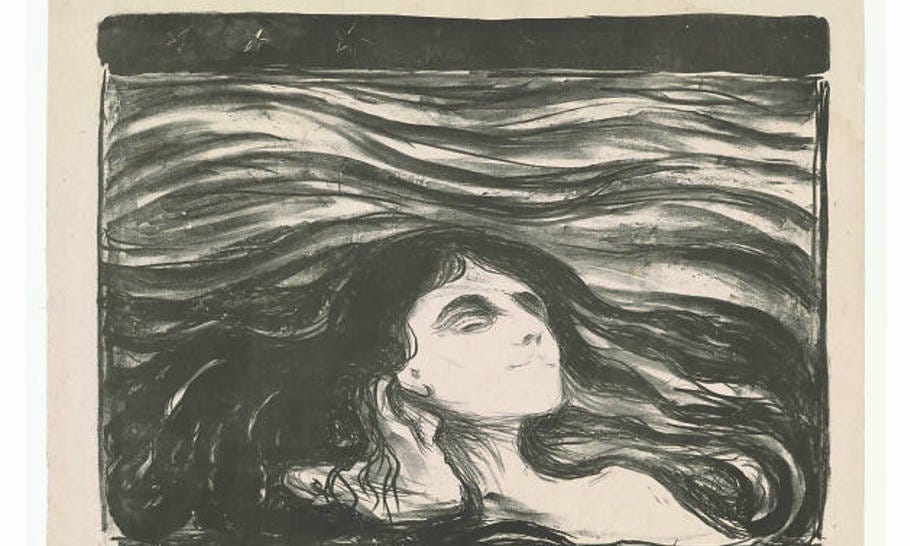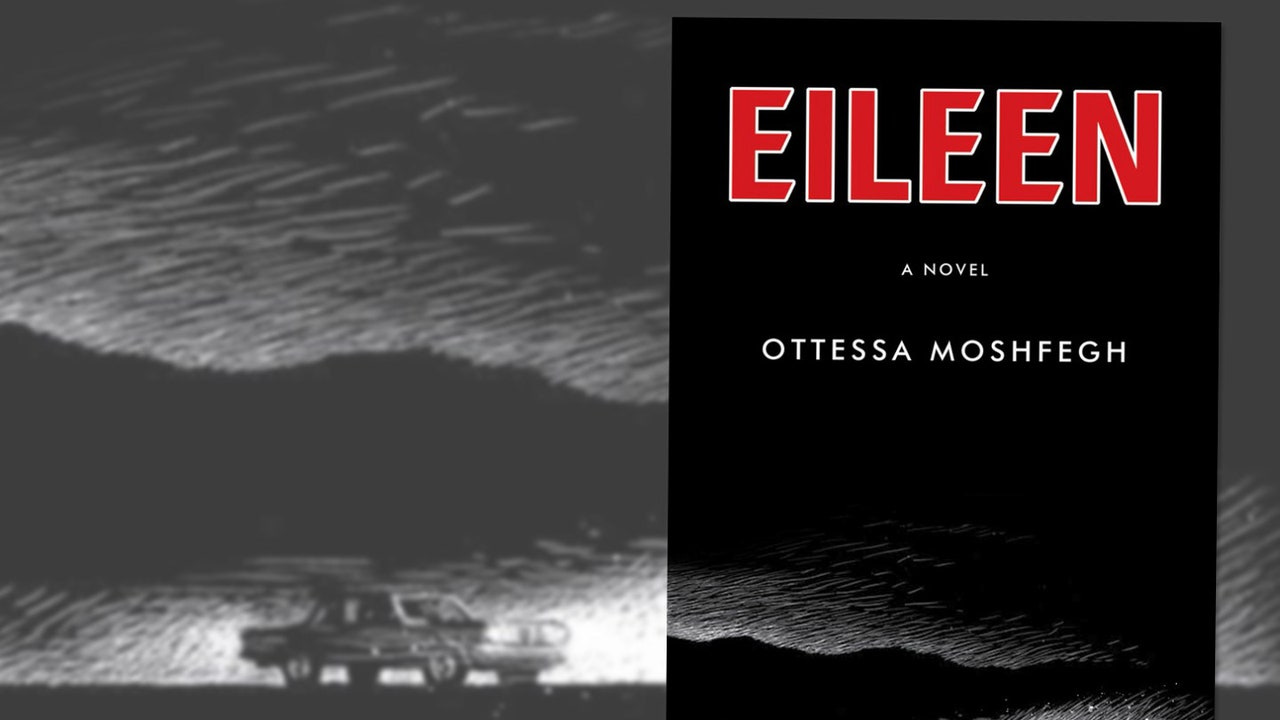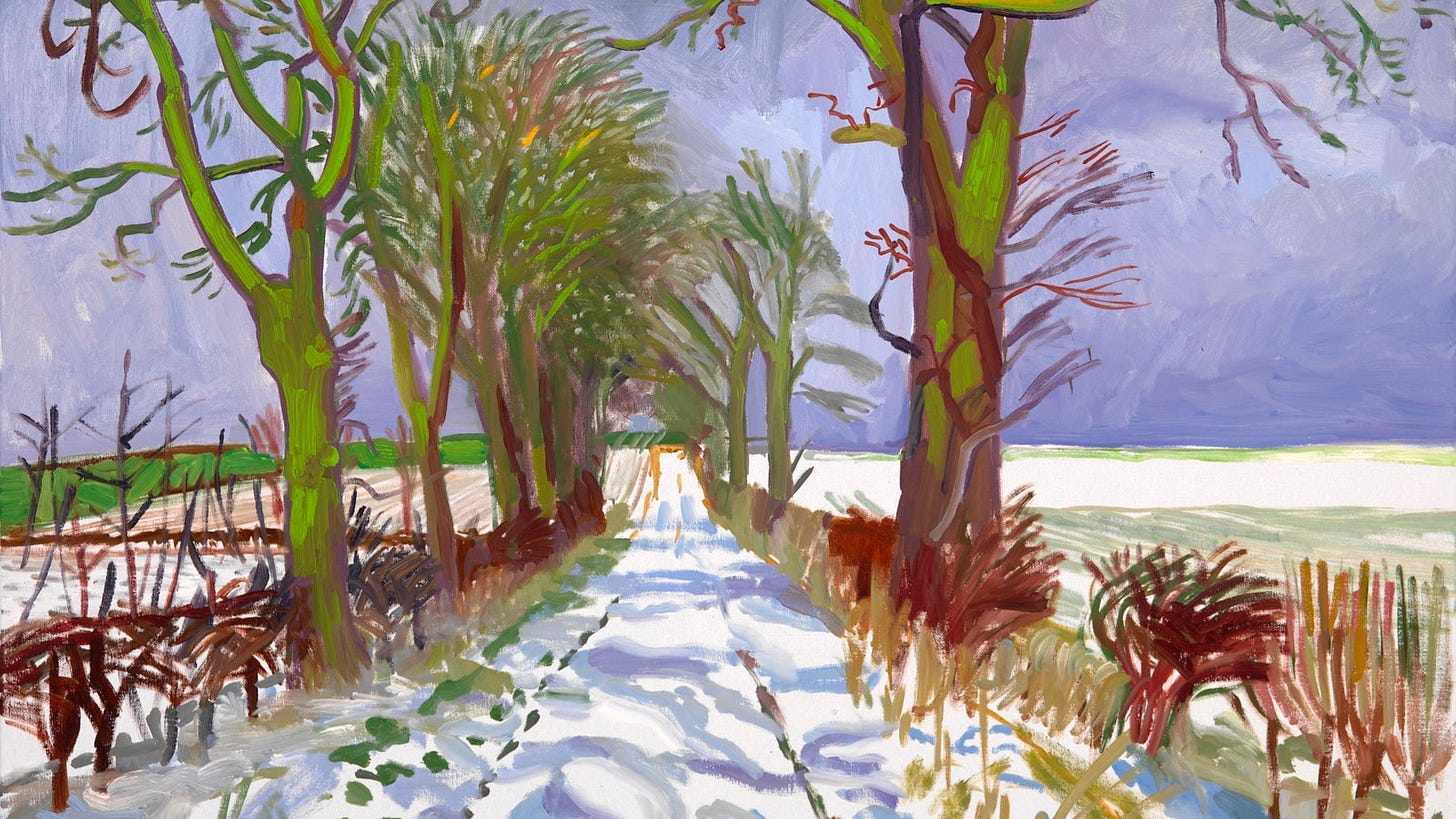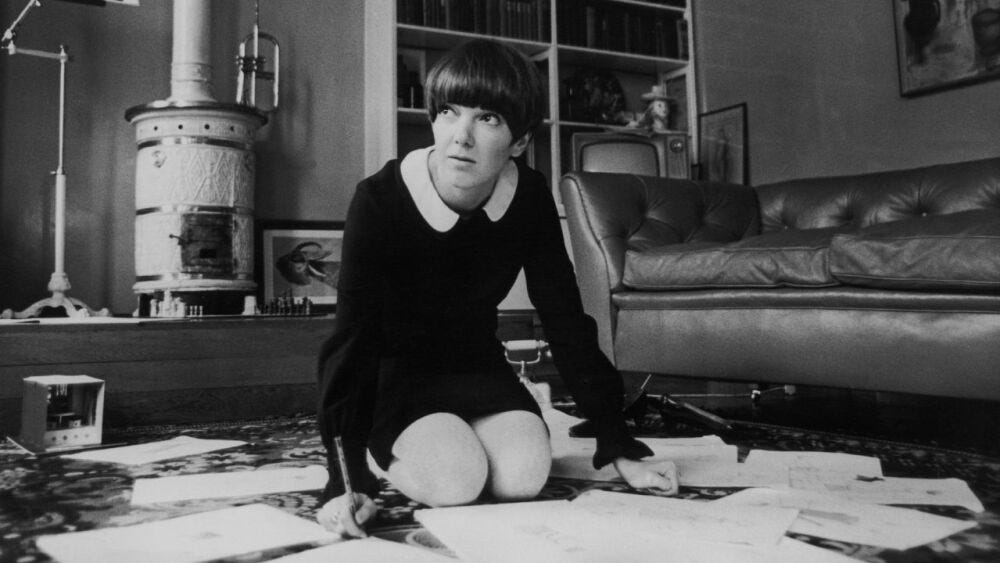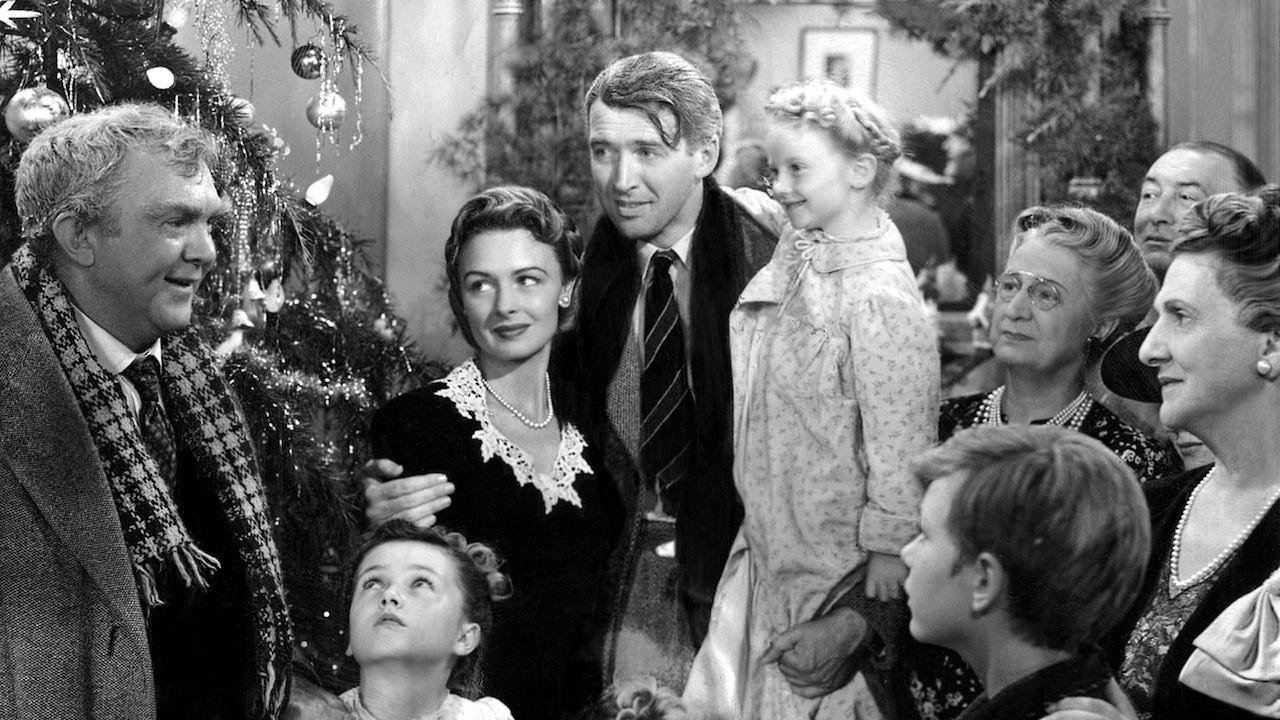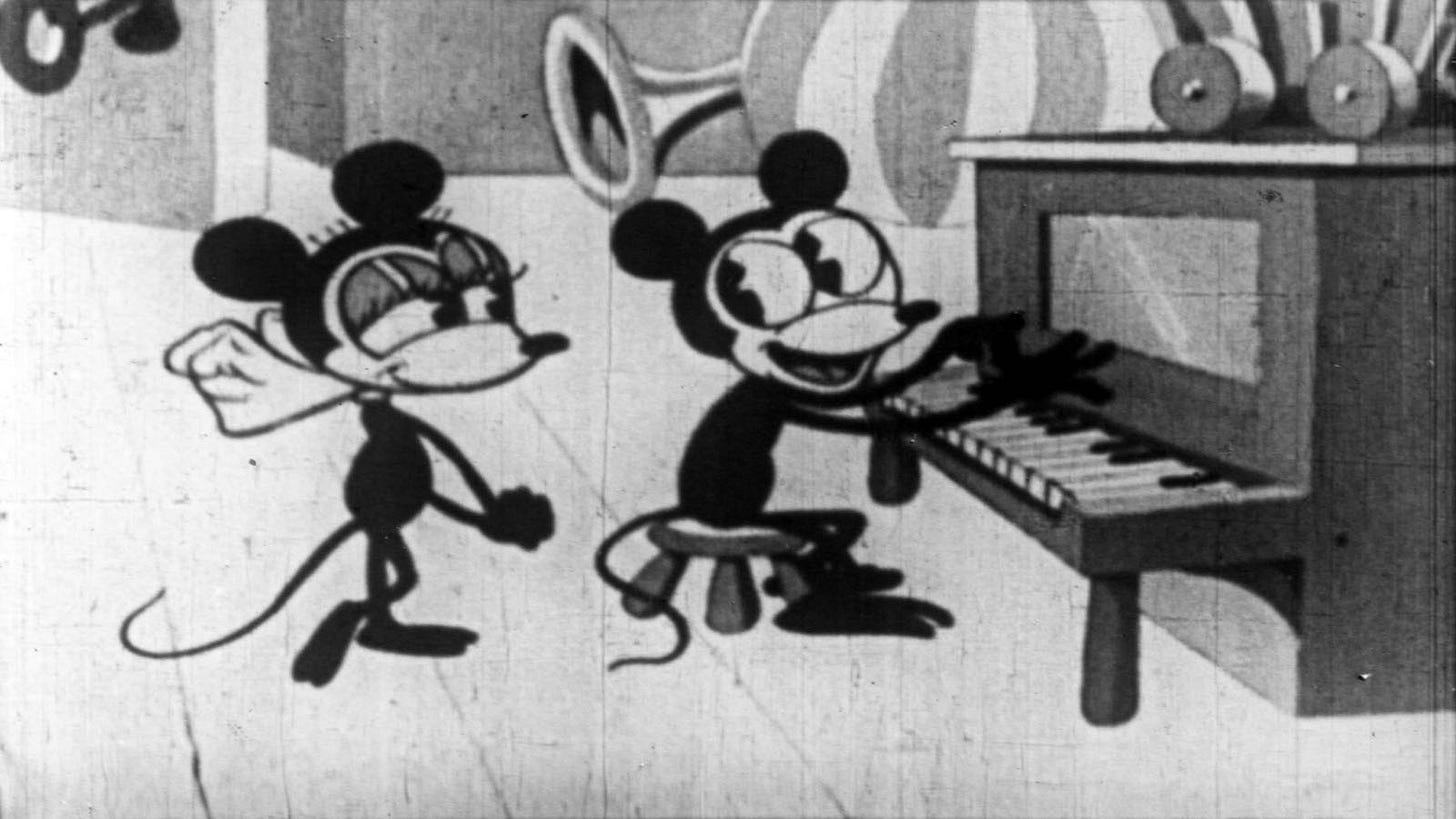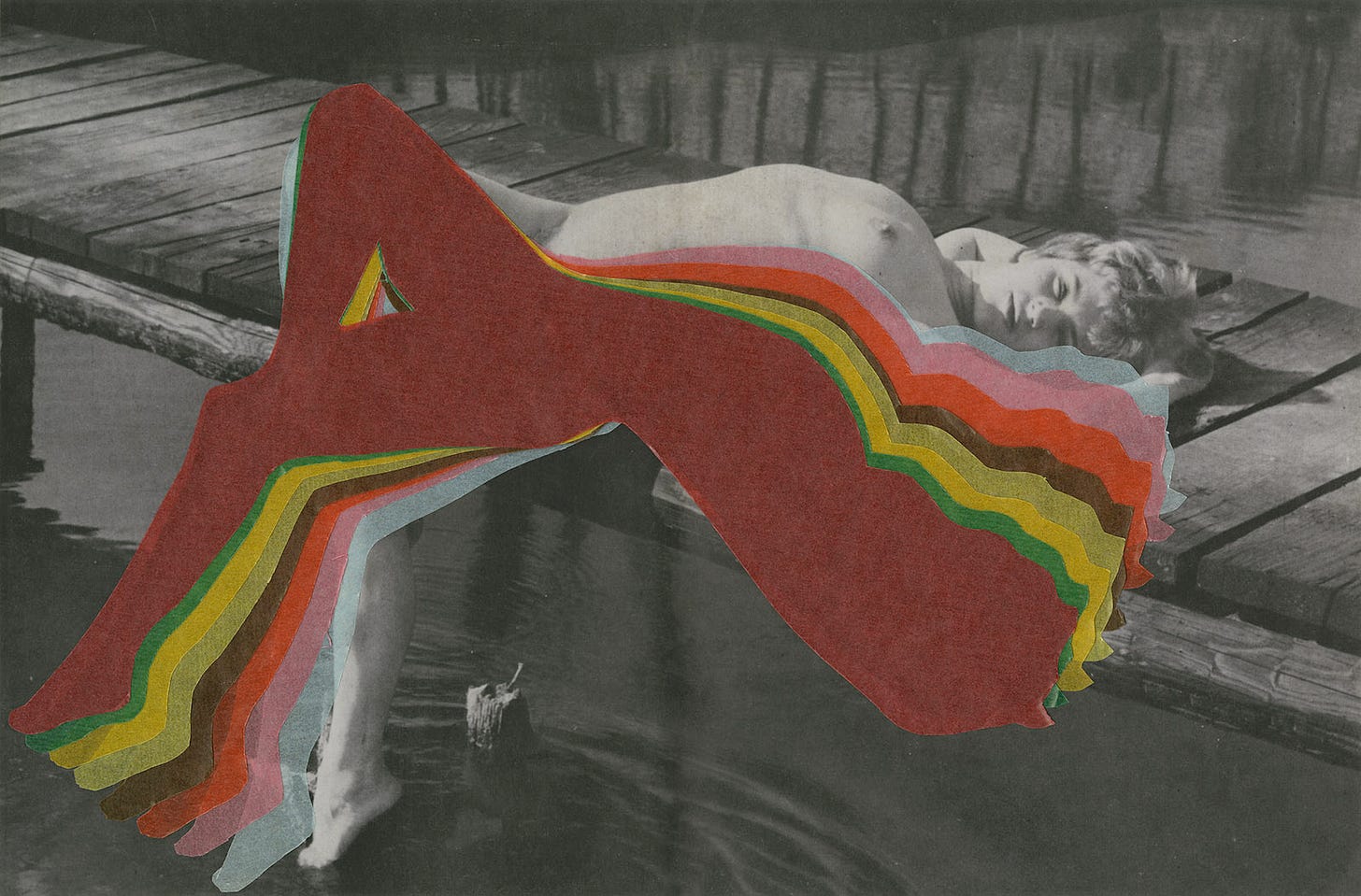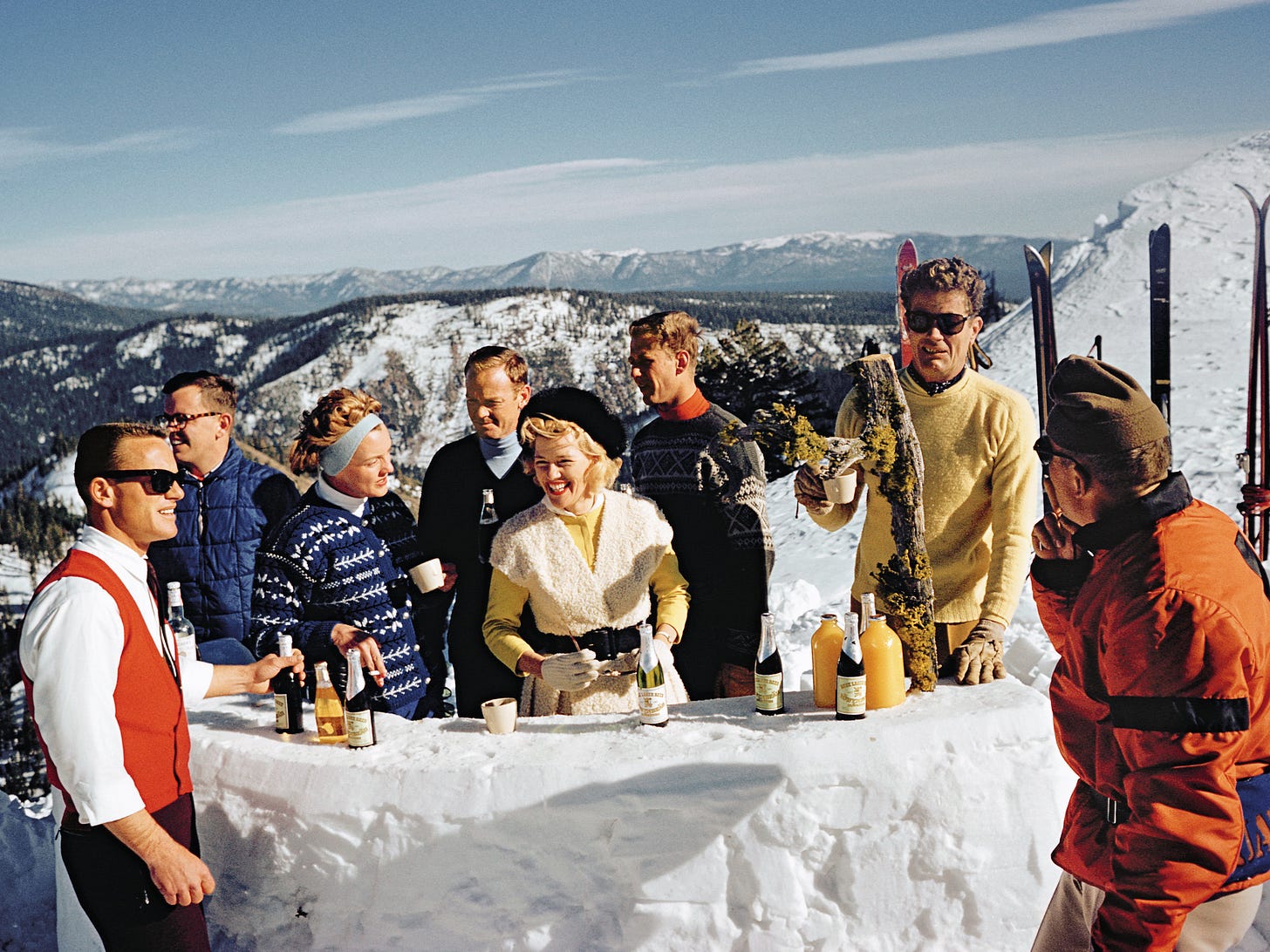The moment has arrived. The long-awaited (read as: potentially awaited since yesterday) ~festive~ newsletter.
Here we go:
December Book Selections
The vibes are Christmas-y and wintery, but not saccharine, you know? Recommendations for the month ahead include:
Small Things Like These by Claire Keegan (2020) — Set in a small Irish town in December of 1985, this novella follows middle-aged local Bill Furlong as he slowly uncovers the local convent’s abhorrent treatment of unmarried mothers and their children, part of the broader network of Magdalene laundries that, per Justice for Magdalenes Research, imprisoned at least 10,000 women and girls between 1922 and 1996. In a review of the novella for The Times, culture writer and critic Barry Pierce aptly notes how Small Things Like These, with its narrative occurring in the lead-up to Christmas, “reads like a tale taking place within a wintry snowglobe, albeit one with a crack splintering its dome.” Through her incisive prose, Keegan crafts a searing exploration of the relationship between community and complicity.
Pierce goes on: “Keegan is clever to funnel the novel’s perspective through Furlong…he reflects the cultural blind eye that Ireland turned toward these vile institutions that, for decade upon decade, incarcerated innocents whose only ‘crime’ was being women in 20th-century Ireland. The novel isn’t just an eloquent attack on these laundries, however. It is also a touching Christmas tale, genuinely reminiscent of the festive stories of O Henry and Charles Dickens; a novel that has been seeped in sherry and served by the fireside.”
Love by Hanne Ørstavik (2018) — Another novella! As I wrote in the September Book Review, “translated from the original Norwegian by Martin Aitken, this ‘icy nocturne of a novel,’ as the front flap so aptly puts it, follows one night in the lives of a small-town mother, Vibeke, and her nearly-nine-year-old son, Jon. On the eve of Jon’s birthday, both embark on separate yet similarly eerie adventures through their new town in the north of Norway.” Love explores its namesake through the lens of an unconventional mother-son relationship, one predicated on a fundamental emotional disconnect that gives way to a wintry fever dream.
Will and Testament by Vigdis Hjorth (2016) — As you’ll recall, I discussed this “propulsive story of inheritance and abuse” extensively in yesterday’s November Book Review. The novel dips into the perspective of theatre magazine editor Bergljot, slowly teasing out the past, present, and future of her broken family. Hjorth develops an elliptical narrative, one that come to mimic its narrator’s trauma through form. The bulk of the action occurs over the course of December, in the weeks leading up to Christmas, making it a timely — albeit dark — holiday season read.
Eileen by Ottessa Moshfegh (2015) — A great time to read or re-read this book with the film version now in theaters! The first novel from Ottessa Moshfegh, Eileen opens in 2014 as its eponymous character recounts an incident from 50 years earlier. Trapped in the doldrums of her job as a boys’ juvie secretary, Eileen moves through her routine without incident until the arrival of new Director of Education Rebecca Saint John catapults her into a chilling New England noir.
Moshfegh famously wrote Eileen as a “fuck-you joke” to the publishing industry. Per The Guardian: “She is candid about Eileen being a deliberate exercise in playing with the format of commercial fiction to get the attention of a big publisher. McGlue and her early short stories might have won awards, but they didn’t pay much, and she ‘wanted to write a novel to start a career where I could live off publishing books. That was my prime motivation for writing Eileen. I thought, fine: I’ll play this game. And I still feel like I’m playing it.’” Despite her formulaic intent, Moshfegh admits that Eileen inevitably evolved beyond the quintessential Hitchcockian neo-noir novel (Gone Girl, Girl on the Train, etc.) that dominated mid-2010s bestseller lists.
Winter by Ali Smith (2017) — The second book in Ali Smith’s seasonal quartet, Winter opens with a Christmas gathering in Cornwall, the narrative gradually unspooling from there. Smith, to me, embodies the notion of showing rather than telling in her writing, her lyrical prose bordering on poetry. This novel does operate as a chronological second to Autumn, which I first recommended back in September and suggest reading prior to Winter.
In that same September issue, I noted how Smith “teas[es] out the sociopolitical landscapes of the 2010s and 2020s with starting immediacy. (For instance, Autumn, published in 2016, integrates Brexit, while Summer, which debuted in 2020, brings in the impact of COVID-19’s onset.)” In her 2017 review of Winter, author and former literary editor of The Observer Stephanie Merritt writes: “These novels are a deliberate publishing experiment, to see how close to publication the author can capture current events; inevitably, even at a distance of months, 11th-hour references to the Grenfell fire and Trump’s reclaiming of ‘Merry Christmas’ already seem like snapshots of the past.” From the vantage point of 2023, her work feels like an even greater distortion of time, its memorialization of recent history reinforcing the collective time warp that has come to define the past several years.
Where I Was From by Joan Didion (2003) — For me personally, Christmas means a week plus-long pilgrimage to California, where I am from. In Slouching Towards Bethlehem (1967), Didion writes: “My own childhood was suffused with the conviction that we had long outlived our finest hour…If I could make you understand that, I could make you understand California.” This quote, to me, captures the quintessence of the California native’s experience, of perpetually living with the ghosts of the myth of the recent past.
While Joan Didion has written endlessly about the state and its culture, Where I Was From, to me, captures the specific experience of growing up in a kind of Shangri-la, of buying into the myth until you start to see its cracks. From my perspective, “Trouble in Lakewood,” first published in a slightly different form in The New Yorker on July 19, 1993, best encapsulates this notion. It tells the tale of an “idyllic postwar town” disrupted by the Spur Posse, a group of teenage boys using a point system to track their sex crimes. The framework of this essay remains predicated on the myth of a prior iteration of Lakewood, one that had yet to outlive its finest hour; to paraphrase Joan, if I can make you understand that, I can make you understand California.
Upcoming Content to Consume
Metrograph’s Holiday Book Fair (12.2 and 12.16) — Metrograph plus book fair. Dream situation. Per the theater’s site, this sale will include “hundreds of vintage film books, magazines, posters, ephemera, and more,” with wintery treats served at the downstairs bar downstairs and brunch at the upstairs Commissary all day. The 12.2 event will get presented in partnership with Posteritati, while the 12.16 iteration will include selections from The Paris Review.
Metrograph’s Women Dressing Women: From Runway to Screen Series (12.8-12.16) — This upcoming series will open in tandem with an eponymous exhibition from The Metropolitan Museum of Art’s Costume Institute (aka: the department that powers The Met Gala).
According to The Met, Women Dressing Women, slated to run through March of next year, “will feature the work of over seventy womenswear designers, spanning ca. 1910 to today, including French haute couture from houses such as Jeanne Lanvin, Elsa Schiaparelli, and Madeleine Vionnet, to American makers like Ann Lowe, Claire McCardell, and Isabel Toledo, along with contemporary designs by Iris van Herpen, Rei Kawakubo, Anifa Mvuemba, and Simone Rocha.” Presented together, the work of these various designers across locations and eras should weave a compelling portrait of fashion by women for women.
Meanwhile, Metograph will celebrate this notion through the medium of film, screening movies in which, per the site, “designers — Gabrielle Chanel, Pauline Trigère, Mary Quant (pictured above), Vivienne Westwood, and Miuccia Prada — are brought on to provide costuming for their recognizable aesthetic, often for female roles, resulting in a synergy between the designer’s sensibility and the fictional characters they dress.” The lineup includes The Rules of the Game (1939), Breakfast at Tiffany’s (1961), The Haunting (1963), The Great Gatsby (2013), Georgy Girl (1966), and Leaving Las Vegas (1995).
Film Forum: Home Alone (1990) (Date: 12.10) — The quintessential Christmas classic for everyone who’s ever really loved living alone (@ me). Home Alone (1990) will play twice on 12.10 as part of Film Forum Jr., the theater’s weekly matinee series dedicated to screening kid-friendly classics for anyone ages five and up who wants to enjoy them, at 11:00 AM and 11:05 AM, respectively.
Film Forum: Metropolitan (1990) (Date: 12.11) — As I wrote in the September Movie Review, Metropolitan (1990) essentially operates as Gossip Girl (Whit Stillman’s Version). It centers on middle class Upper West Sider Tom Townsend (played by Edward Clements) as he gets pulled into an Upper East Side bubble of privilege at the height of a late 80s debutante ball season (aka: the week between Christmas and New Year’s // Metropolitan is a holiday movie ~change my mind~). All the while, Tom harbors a crush on a girl named Serena (played by Ellia Thompson) and gets mocked by Chuck Bass precursor Nick Smith (played by Chris Eigeman, aka: fetal Jason Stiles from Gilmore Girls). My least favorite of Stillman’s doomed bourgeois in love trilogy, but still a seasonally appropriate banger.
IFC Center: It’s A Wonderful Life (1946) (Dates: 12.12-12.15) — This annual screening has become a favorite holiday tradition of mine. While the film actually opens at IFC on 12.8, Donna Reed’s daughter, Mary Owen, will introduce the Christmas classic at 7:00 PM from 12.12 through 12.15.
Metrograph’s Saturday Afternoon Cartoons: Happy Endings (Date: 12.16) — In October, I had the pleasure of attending Funny Phantoms, the most recent iteration of Metrograph’s Saturday Afternoon Cartoons series. Curated by historian Tommy José Stathes from his collection of 16mm film prints, the sampling featured classic cartoon characters from the 1920s through the 1950s — from Casper the Friendly Ghost to Felix the Cat to Betty Boop — and wrapped with a thoughtful Q&A.
Now, per Metrograph, Saturday Afternoon Cartoons will return with Happy Endings, “a selection of vintage animated shorts that bring our year of programming to a close on some very happy notes. Come enjoy a determined cartoon pig’s attempts at saving his railroading career; a gnome community’s approach to curing clinical depression; Max Fleischer’s take on the classic Cinderella fairytale; a famous feral feline’s quest for dignity and respect from humans; a mouse’s breakout role as a superhero who saves the day, and other assorted tales of struggles met with triumph.”
This screening will happen the same day as Metrograph’s Holiday Book Fair presented in partnership with The Paris Review.
New Beverly Cinema: Die Hard (1988) (Date: 12.24) — For my West Coast subscribers! The New Bev’s annual Christmas Eve screening of Die Hard (1988) is back again. ICYMI: the film follows NYPD detective John McClane (played by Bruce Willis). He arrives in Los Angeles in hopes of reconciling with his estranged wife, Holly (played by Bonnie Bedelia) at her office Christmas party — but things take a turn when a hostage situation masterminded by Alan Rickman ensues. The timeless holiday classic will play at 2:00 and 6:30 PM.
Village East’s Four Weeks of Christmas Series (Timing: Ongoing in December) — This four-week series kicked off with a screening of one of my personal favorite films, Bridget Jones’s Diary (2001), the final Wednesday in November, which I obviously attended. Now, it continues this month with screenings of The Holiday (2006), It’s A Wonderful Life (1946), and Elf (2003) in a gorgeous art deco, stadium-style theater. (Although, tbh, you should prioritize IFC for It’s A Wonderful Life.)
Miscellaneous Musings
On Sexual Politics in the Millennial Novel — In “Hit Me, Baby,” her latest essay for NYRB, American-Zambian writer Namwali Serpell unpacks how “a spate of fiction about young women besting their older, powerful male lovers aims to remix and take revenge on that stately master narrative we call The Novel.” Dubbing this genre of contemporary fiction the “remaster novels,” Serpell weaves a web between Jane Eyre (1847), 50 Shades of Grey (2011), and Conversations with Friends (2017), among other recent bestsellers like Lillian Fishman’s Acts of Service (2022; didn’t read), Raven Leilani’s Luster (2020; five stars, no notes), and Naoise Dolan’s Exciting Times (2020; a poorly executed Sally Rooney dupe IMO). She identifies how, at its core, “the transgression at the pulsing center of these novels is not of sexual or social mores but feminism itself, which has indeed calcified into an ideology with specific practices and contracts and badges of honor.”
This notion of feminism as religion, as something capable of spurring transgression, strikes me as especially interesting. Serpell’s piece deals primarily with millennial women novelists, women who came of age under the influence Twilight (2005) and 50 Shades of Grey, books that deal in dominance and submission, if not outright BDS&M. These novels sold the myth of power as the quintessence of sexy, hardly a generationally specific idea. But then came the girlboss feminism that dominated the latter half of the 2010s, the emergence of capital F (and capitalist) feminism as the core of culture. Scores of millennials — heterosexual women and queer women attracted to men — suddenly found themselves grappling with two conflicting truths: justifiable fear of the very real, very undesirable dark side of power illuminated by Me Too and ingrained attraction toward the brand of power pop culture sold as sexy in the late 2000s and early 2010s.
Power play might have a heritage dating back to Brontë, but I view this cultural whiplash as generationally specific. Serpwell writes: “We can easily trace a kinky shadow line through literary history, including such works as Daniel Defoe’s Roxana (1724), the Marquis de Sade’s Justine (1791), Colette’s Chéri (1920), Pauline Réage’s Story of O (1954), Samuel Delany’s Hogg (1969), Marguerite Duras’s The Lover (1984), Mary Gaitskill’s Bad Behavior (1988), and Annie Ernaux’s Simple Passion (1991). But though they poach from it and even allude to it, the recent ‘remaster novels’ are not really joining that smutty countertradition. They’re far tamer.” The-Twilight-craze-to-girlboss-feminism-era pipeline, from my perspective, accounts for this distinction; it planted the kind of cognitive dissonance that birthed the “remaster novels,” that caused this genre to emerge as distinctive from the “kinky shadow line through literary history.” By largely dealing in heavy intellectualization over sexualization, this subgenre, as I see it, attempts to surmount — rather than submit to — the tension between desire for and fear of power in its fullest spectrum.
Supplemental Reading
As always, don’t forget to use archive.ph if you can’t access these pieces or any of the ones throughout my Substack!
Vogue: Cameron Diaz in The Holiday Is My Winter Style Inspiration
Dwell: The Best Reorchestrations in Maestro Are Leonard Bernstein’s Homes
New York Times: Sofia Coppola and All the Sad Girls
Literary Hub: On Literary Empathy and the Performative Reading of Palestinian Authors
Los Angeles Review of Books: There’s Always Tomorrow: On Ursula Parrott and Marsha Gordon’s “Becoming the Ex-Wife”
Real Simple: The Best Christmas Cocktails to Pair With Your Favorite Holiday Movies
Cocktail of the Month
I saw a Gingerbread Negroni mentioned on Dante’s Instagram and immediately went in search of different recipes. This one struck me as the most promising.
First things first, you’ll need to make a gin infusion. Mix gin with a ginger tea bag, two large slivers of ginger, one clove, one star anise, a quarter teaspoon of allspice, and a quarter teaspoon of ground ginger. Let the mixture steep for about 30 minutes. Then, strain and store until needed.
To make the drink itself, mix one and a half ounces of the infused gin with one and a half ounces of spiced rum and red vermouth, respectively. Serve with an orange rind.
I’ve also linked a piece here and under supplemental reading that has specific cocktail pairings for different holiday movies!
That’s all for now! Toward the end of the month, I’ll plan to do some form of year-in-review post(s). Stay tuned!
xo,
Najet

